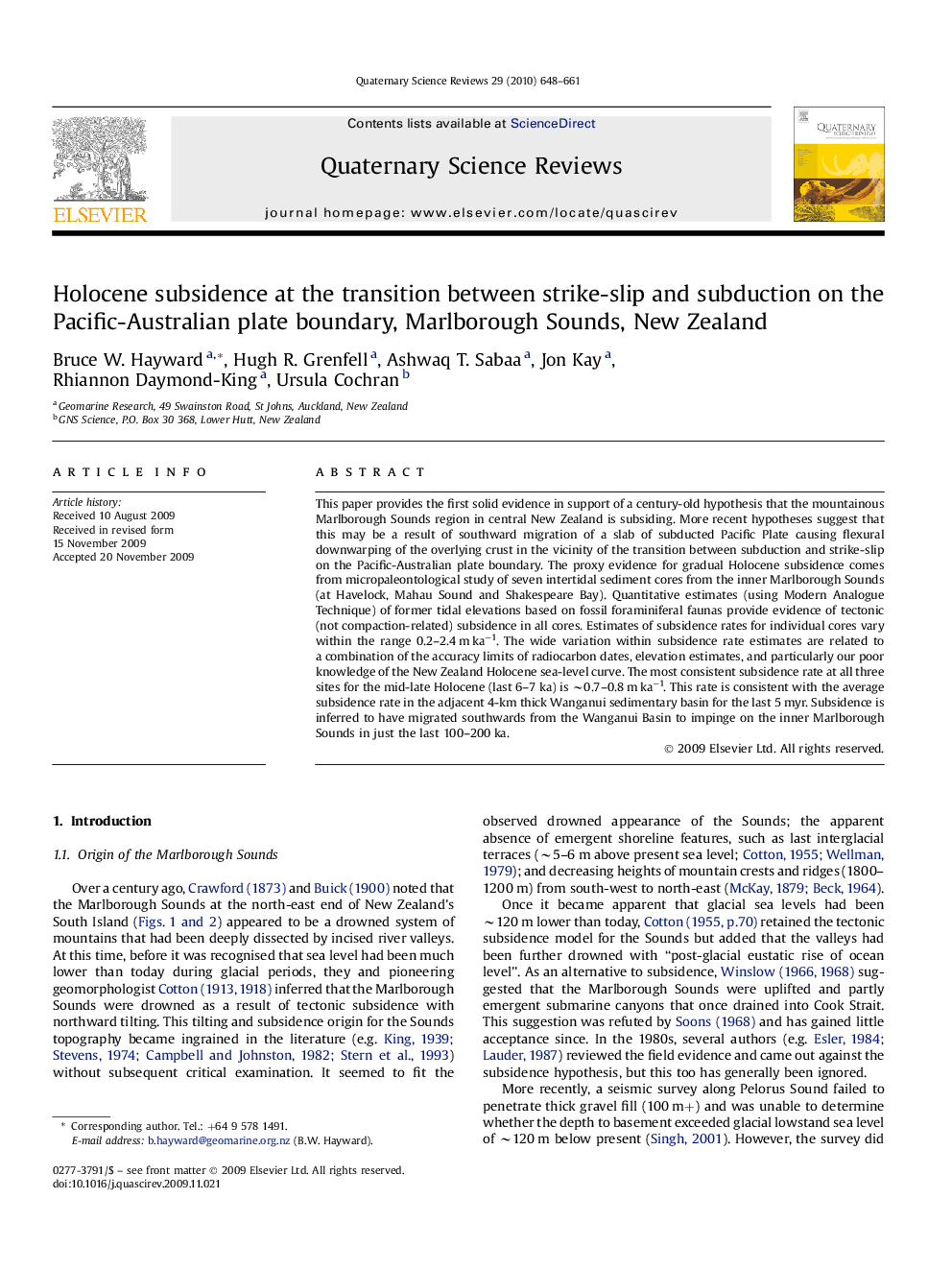| کد مقاله | کد نشریه | سال انتشار | مقاله انگلیسی | نسخه تمام متن |
|---|---|---|---|---|
| 4736890 | 1640929 | 2010 | 14 صفحه PDF | دانلود رایگان |

This paper provides the first solid evidence in support of a century-old hypothesis that the mountainous Marlborough Sounds region in central New Zealand is subsiding. More recent hypotheses suggest that this may be a result of southward migration of a slab of subducted Pacific Plate causing flexural downwarping of the overlying crust in the vicinity of the transition between subduction and strike-slip on the Pacific-Australian plate boundary. The proxy evidence for gradual Holocene subsidence comes from micropaleontological study of seven intertidal sediment cores from the inner Marlborough Sounds (at Havelock, Mahau Sound and Shakespeare Bay). Quantitative estimates (using Modern Analogue Technique) of former tidal elevations based on fossil foraminiferal faunas provide evidence of tectonic (not compaction-related) subsidence in all cores. Estimates of subsidence rates for individual cores vary within the range 0.2–2.4 m ka−1. The wide variation within subsidence rate estimates are related to a combination of the accuracy limits of radiocarbon dates, elevation estimates, and particularly our poor knowledge of the New Zealand Holocene sea-level curve. The most consistent subsidence rate at all three sites for the mid-late Holocene (last 6–7 ka) is ∼0.7–0.8 m ka−1. This rate is consistent with the average subsidence rate in the adjacent 4-km thick Wanganui sedimentary basin for the last 5 myr. Subsidence is inferred to have migrated southwards from the Wanganui Basin to impinge on the inner Marlborough Sounds in just the last 100–200 ka.
Journal: Quaternary Science Reviews - Volume 29, Issues 5–6, March 2010, Pages 648–661